How to propagate boxwood correctly?
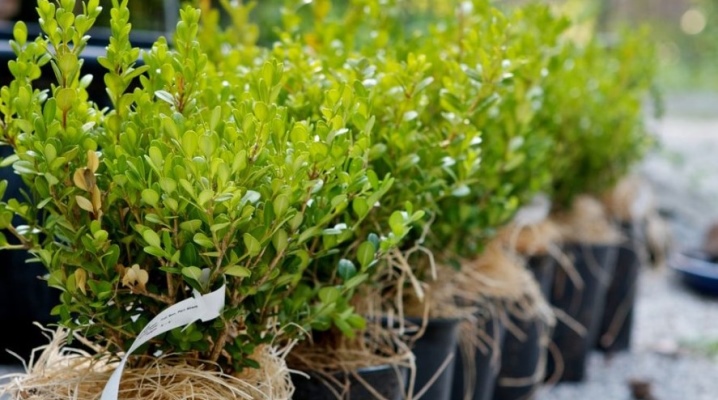
Boxwood is also called buxus. This plant is an evergreen shrub, with its help you can create both hedges and a variety of compositions on the plots. Reproduction at home is not difficult. We will tell you about the methods and intricacies of the procedure in the article.
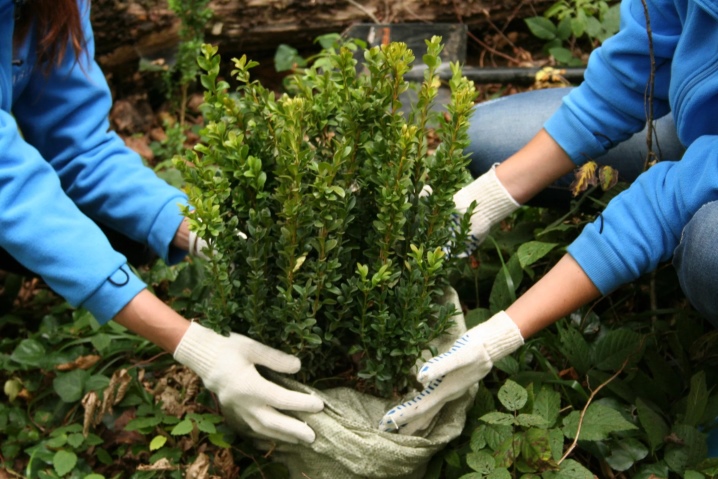
Breeding features
There are three main ways by which the boxwood reproduces. These are seeds, cuttings and cuttings. The most suitable time is spring and autumn, however, experts recommend performing the operation in the fall, this contributes to the early adaptation of seedlings to new conditions and their more active growth. To prepare planting material, you need to pay attention to healthy bushes 2 years old and older.
Fertile and fairly loose soil is the best choice for planting. For faster rooting, you can use mini greenhouses.

With late harvesting of planting material, reproduction can be carried out at home in the winter. In spring, the seedlings can be placed in a new location in the open field. The most difficult way to propagate this plant is with seeds. This method is rarely used even by experienced gardeners, as it takes a lot of time and requires patience.
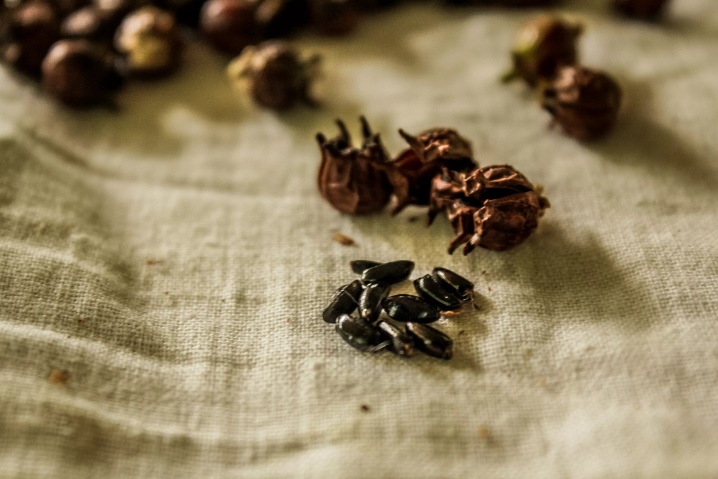
Cuttings
Harvesting of planting material can be carried out when pruning of the shrub is done. The cuttings should be less than 20 centimeters long and the bark should be smooth and intact. In addition, each must have at least two live buds. A sharp knife is used for cutting, and the angle should be about 45 degrees. For rooting, the lower leaves should be cut off, and the cutting itself should be placed for the required time in a root-forming solution. After that, they are buried vertically into fertile soil with a drainage layer.
The distance between the seedlings should be about 15 centimeters.
After that, the plants are watered and mulched. Then they should be covered for about a month.
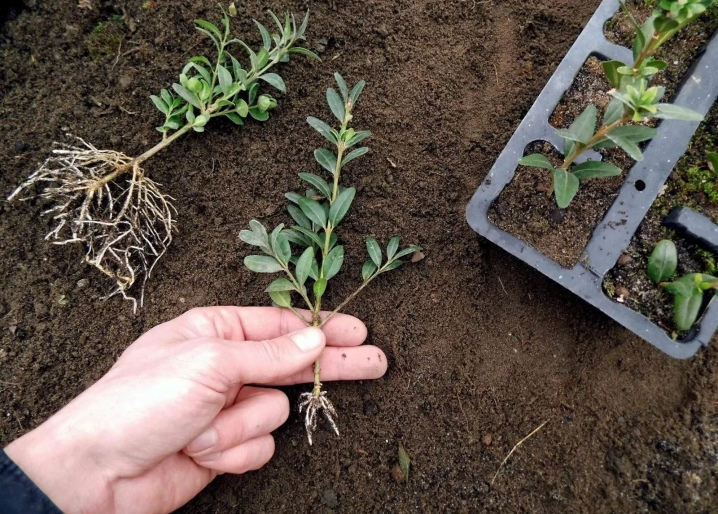
After this period, the root system begins to develop. If we are talking about the southern regions of our country, the landing should be carried out in late September or early October. In colder climates, the procedure is best done in late summer or early fall.
In order to root the cuttings, they need to be constantly watered and ventilated.
Watering is carried out in the evening when the sun becomes less active. When transplanting, a clod of earth should be preserved on the roots - this will protect them from damage. If cuttings are harvested in the summer, they may not have time to get stronger, which threatens their death. Therefore, over the time of cuttings, it is better to decide in advance.
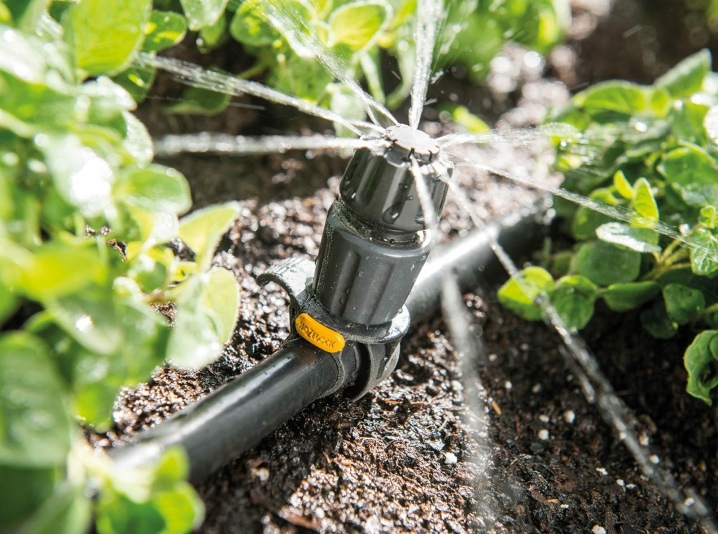
How to propagate by layering and dividing the bush?
This method is considered by many to be the easiest. The undoubted advantage is that the procedure is not tied to a specific time, it can be carried out from spring to autumn. You can use bushes that are older than two years. An external branch is selected on them. It should be located near the ground. After that, a 15 centimeters trench is dug. The branch is attached to the ground with studs. And also wire or pegs bifurcated according to the principle of a slingshot are suitable.In order for the root system to develop, all leaves are removed from the branch, and the bark is slightly incised.
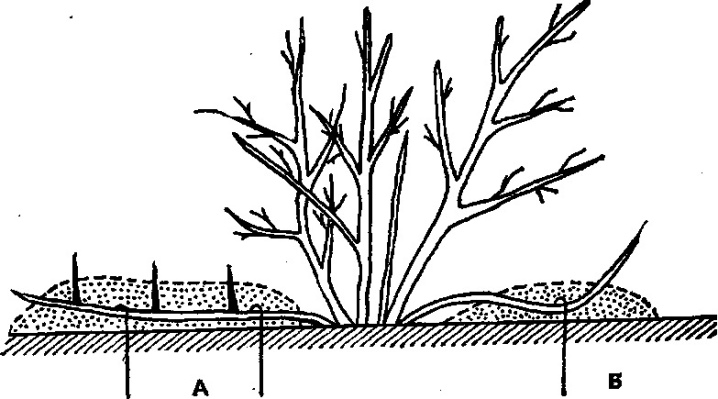
A branch fixed in a trench must be sprinkled with a soil mixture made with the addition of sod land, humus and peat. After that, you need to make sure that the soil does not dry out. Watering is carried out regularly. When the first shoots appear, a small shelter is made to protect them from the scorching sun.
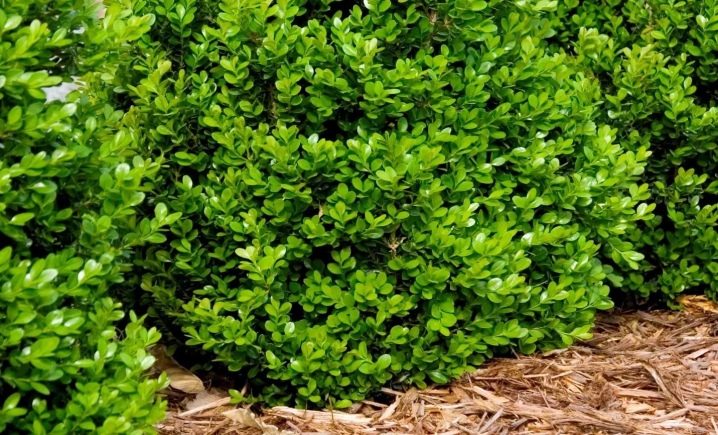
Another way is division. This may be a necessary measure, because the bushes will eventually fill the space allotted for them, even if pruning is constantly being carried out. This threatens with a lack of nutrition and light, respectively, decorative properties suffer.
The transplant, as in the previous case, is not tied to time.
Where the boxwood will separate from the bush, the earth is undermined. The root section with healthy shoots is carefully cut off with a knife or shovel, after which it is vertically placed in a pre-prepared planting hole. Care must be taken to keep the ground moist. It is gradually compacted.
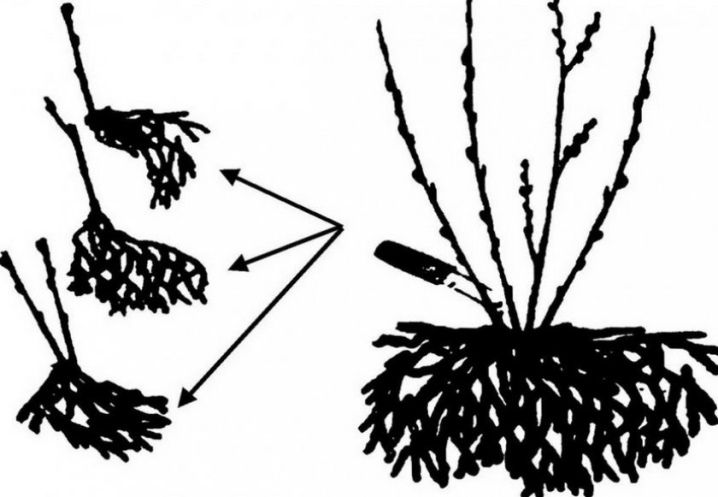
As for watering and feeding, this should be done regularly. Seedlings require the same nutrition as adult bushes. After transplanting, you need to create an artificial partial shade for at least a few days - this will protect the plant and allow it to more quickly adapt to new conditions. Even novice gardeners can plant boxwood in similar ways.

Growing from seeds
This procedure is carried out quite rarely, as it has a number of difficulties. Growing from seed is time consuming and also requires considerable effort by the grower. First of all, you need to attend to the collection of seeds. The shrub is pruned quite often, and therefore the seed does not have time to ripen. Accordingly, gardeners have to leave several branches without cutting them.
Seed collection is carried out in the fall.
The seeds of the bush are quite strong and do not germinate well. A year after harvest, they are no longer suitable for breeding, so when buying seeds in the store, you should pay close attention to the harvest date so as not to waste time.
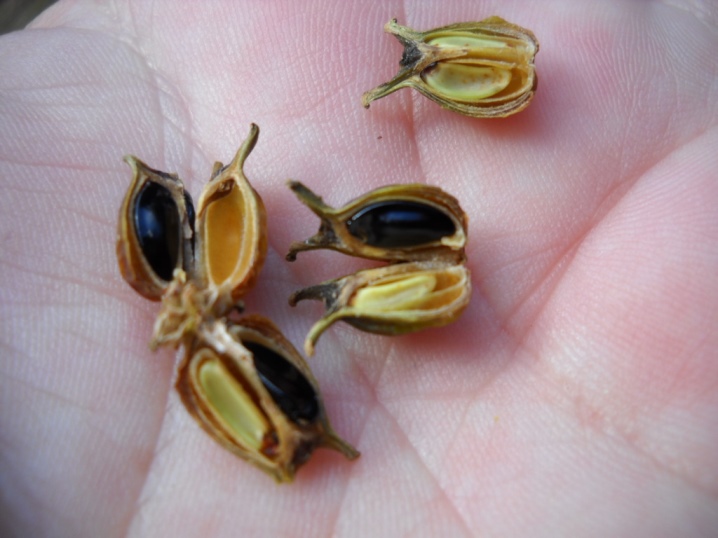
When soaking, use special solutions. Perfect fit "Kornevin", "Zircon", "Ecoel" and others. This will not only help the seeds to germinate more actively, but also strengthen the immunity of future plants, which is also important. The seeds should be placed in the solution for 20-30 hours, after which they are placed on a dense, moist cloth and covered. The germination process will take about a month. During this time, the fabric will need to be regularly moisturized to create a comfortable environment. The sprouts are directed downward.
In addition, gardeners recommend stratification. It has a beneficial effect on seeds, increasing the percentage of germination.
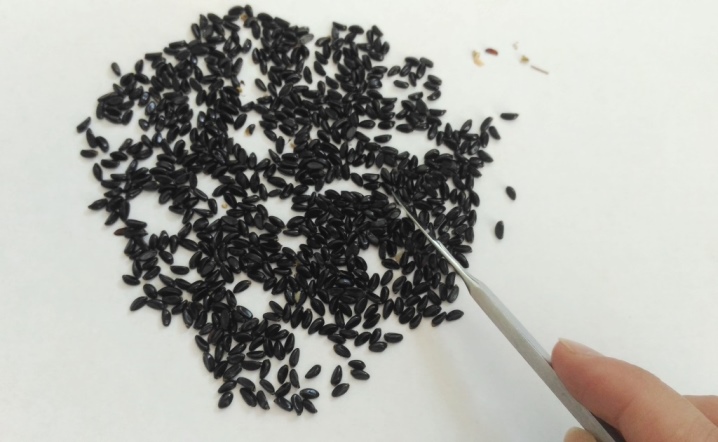
To begin with, the seeds are soaked in water or a special solution. Sand should be prepared, which is poured into a small container, after which it is thoroughly moistened. Seeds are neatly laid out there, the distance between them should be about a centimeter. Wet sand is also placed on top. After that, the container is removed in the refrigerator on the shelf, which is intended for storing vegetables, for about a month. During this time, it is necessary to check that the container does not freeze or dry out. A month later, it is removed to a warm place and covered with a lid. After 3-4 weeks, seeds begin to hatch.
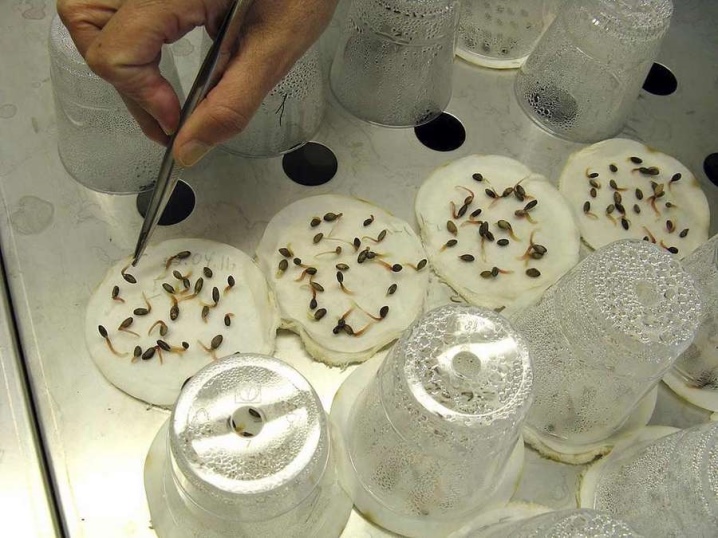
Seeds are planted exclusively in loose soil. In addition, it will be useful to add crushed foam or perlite to it. The drainage mixture, purchased in the store or prepared by yourself, is placed in a container. In its bottom, small holes are made in advance through which excess liquid will leave during watering.If the soil was made by yourself, it is strongly recommended to calcine it or disinfect it with special preparations.
It is best to prepare your own small container for each seed. This will provide them with peace of mind for a longer time.
Plastic cups will do. When it is noticeable that the root system has grown so much that the container is full, you need to transplant the boxwood into the ground or into a larger pot.
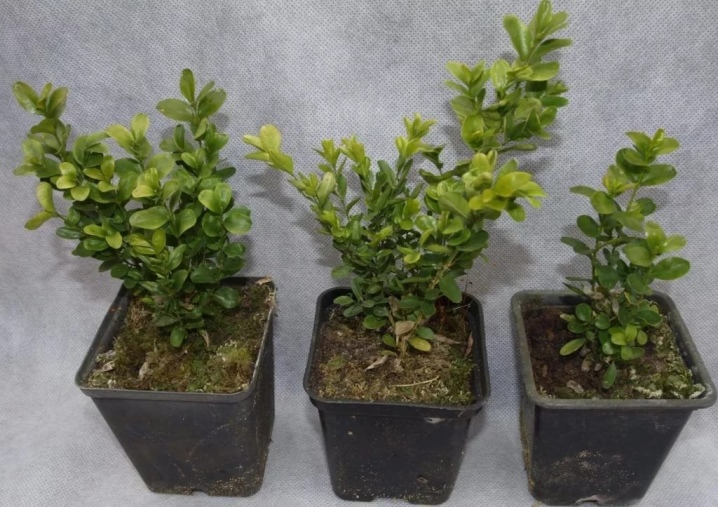
After that, it is necessary to regularly water the plant and fertilize the soil. The first feeding is done a month after seed germination. Complex mineral supplements will be the best option. After that, feeding is carried out about twice a month. As soon as it gets warmer outside, the seedlings need to be hardened. To do this, they are exposed in a greenhouse or shaded place without drafts.

Transplanting a plant to a permanent place
Landing in open ground deserves special attention. The sprouts should get strong enough, they can only be planted after that. In winter, it is better to protect young growth, it takes cover along with the mother bush. If the layers are at a considerable distance, you can use spruce branches. The mother branch is separated from the plant with a pruner. To ensure the safety of the roots, the soil should be dug a little.
The seedlings are cut, but care must be taken that each has a small part of the mother branch, this will help the formation of additional roots.

The plot of land is prepared in advance, otherwise the roots will have time to dry out. If possible, a lump of soil is left around the roots, this will save the plant from stress and help it adapt faster to new conditions. The soil is well moistened, fertilizers are applied - this will allow feeding the seedlings only a year later. To make the plant as comfortable as possible, the seedlings can be placed under a shelter for a month. The main point in the future will be soil moisture - it should be optimal, not too dry and not flooded with water.
In autumn, the cuttings are also sheltered, only under protection will they be able to survive the winter cold in the first year after planting.
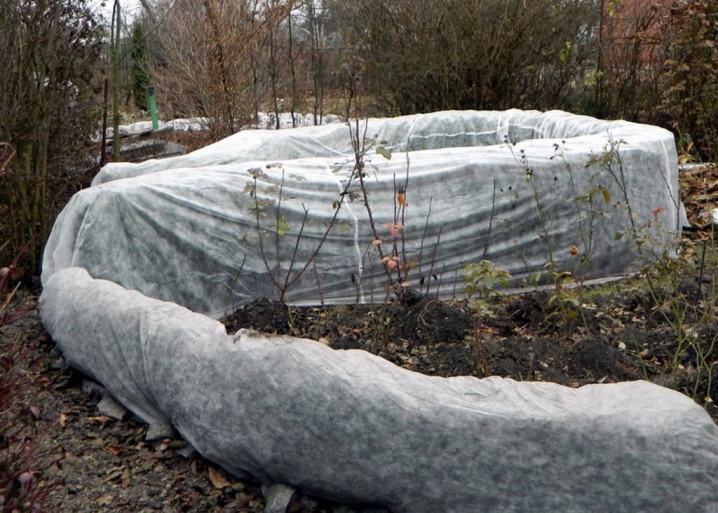
When it comes to boxwood obtained from seeds, planting should be done towards the end of summer. In this case, the plant will be able to adapt to new conditions and get as strong as possible before the onset of the first cold weather. Mulching should be carried out using peat, compost or manure.
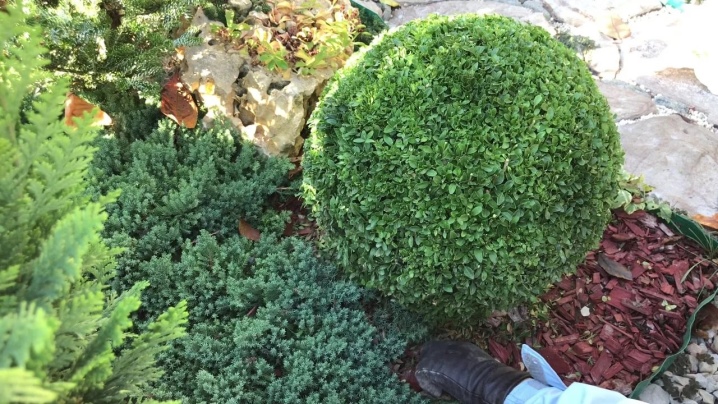
Further care
To grow a strong and beautiful plant, you need to provide it with proper care. He does not need special soil, but it is better to opt for a fertile one. Growth is best formed if the soil is breathable. In poor soil, all the force will go into the formation of crown density. There is no need to cover the boxwood for the winter, with the exception of young and weak plants. But it must be borne in mind that in some cases, cold wind and direct sunlight can cause significant harm. Therefore, it is best to cover the plant with burlap or a shield at such a time.

The formation of the crown deserves special attention. The tree will need to be cut annually during the summer. Only shoots that are lignified at the very base are subject to processing. The shape can be any, it all depends on the preferences of the gardener. A ball, a pyramid, and a square look equally good.
It should be borne in mind that the procedure should be carried out exclusively during the growing season, if necessary, the amount can be increased up to three times.
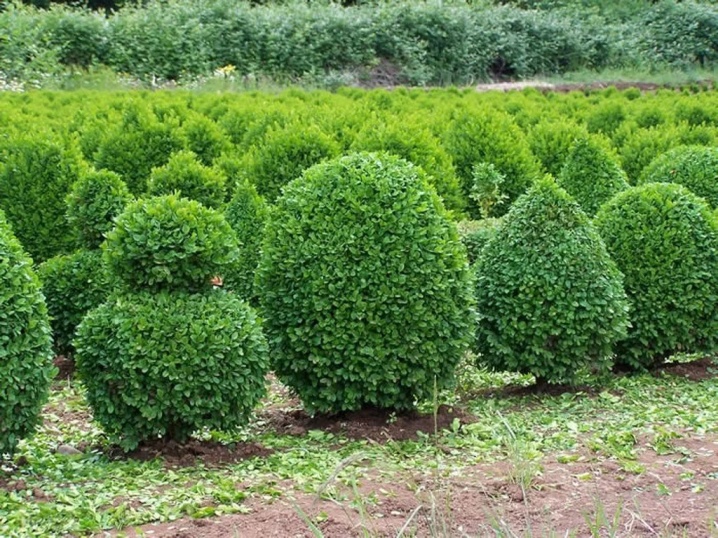
If the boxwood grows at home, the temperature may not be monitored. Sometimes you should still take the plant out into the open air. It should overwinter in a cool place, in addition, it will need to be watered less often. Watering is usually plentiful, as the soil must be moist. In spring, the shrub should be more often exposed to the window or balcony, under the rays of the sun.In addition, one should not forget about the feeding that is necessary during active growth. Fertilizers are applied 2 times a month.
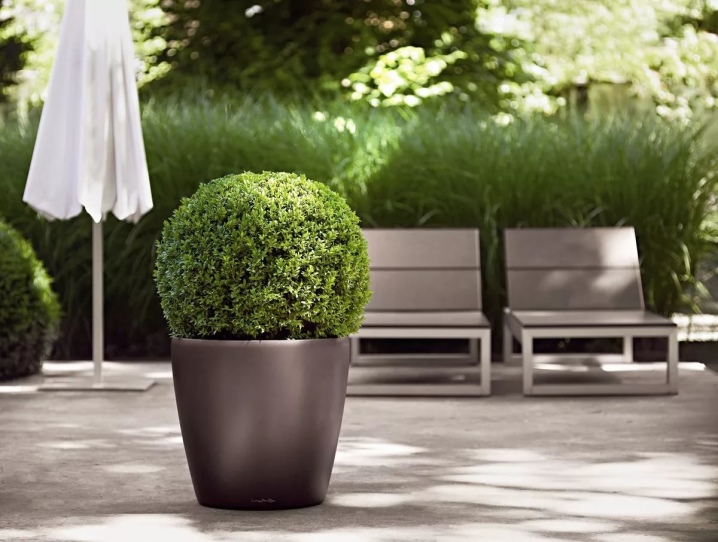
In the following video, you will learn expert advice on how to properly propagate boxwood by cuttings.






























































The comment was sent successfully.